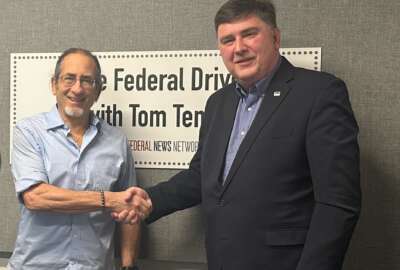Air Force develops remote health sensors
The Battlefield Automatic Life Status Monitor is a new technology that would allow soldiers to be monitored remotely
wfedstaff | June 3, 2015 6:51 pm
The Battlefield Automatic Life Status Monitor watches over heart rate, respiration rate, activity level and core body temperature — remotely! That means medical technicians can watch over warfighters while they’re on the battlefield and make sure they’re okay. The device is being developed by QinetiQ North America’s Technology Solutions Group along with the Air Force Research Laboratory.
The technology is comprised of two different sensors: A wireless pulse oximetry forehead sensor which can measure pulse, heart rate, respiration, and even movement and body position. The second is a capsule that is swallowed that measures core body temperature, and can detect hypothermia, or extreme heat. There is also a receiver unit which collects all the information and then transmits, and also records it for review later.
Through the receiver, medical staff can also communicate with an injured servicemember.
“The technology is different in that we’re measuring the pulse ox is a different way. In fact, pulse ox to measure remotely is difficult and having it be measured on the forehead is different location than in other places,” said Dr. Dianne Popik, Research Audiologist at the Air Force Research Laboratory. “That is an innovative solution to this.”
The technology is still in the prototype phase, but the intention is to introduce it in the field, Popik said, and research is working in that direction.
The technology started in an effort to incorporate a remote physiological monitoring capability into the battlefield airmen toolkit.
Initially it was meant to be part of a communications system and inserted in an earplug, all the sensors are supposed to read the data through an earplug, which technology is really not at that point to have it so miniaturized,” Popik said. “So we changed it a little bit to have it more incorporated with other equipment that battlefield airmen would wear.”
The team challenged itself to develop innovative, new technology, and would like to have it deployed in the next two years.
“Again, this is a prototype, but we’d like to move forward with it,” Popik said. “I think it’s very promising at this point.”
This story is part of Federal News Radio’s daily DoD Report. For more defense news, click here.
Copyright © 2025 Federal News Network. All rights reserved. This website is not intended for users located within the European Economic Area.





